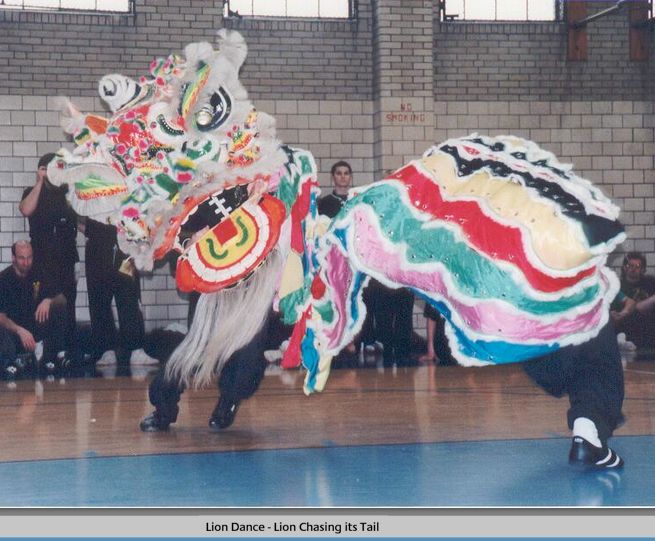History of the Lion Dance
Lion dancing originated during the Tang dynasty (618-906 AD). Legend has it that the emperor had a dream one night in which a strange-looking animal saved his life. The following day, the emperor described the dream to his ministers. One minister told the emperor that the strange animal resembled a creature from the West, a lion.
Since the strange animal saved the emperor in his dream, the lion quickly became a symbol of good luck throughout China. It was believed that a dancing lion chased away evil spirits. Today, lion dancing is still the most important opening ceremony for Chinese events and businesses. It’s also a necessary ritual for businesses during the Chinese New Year, for lion dancing evokes good luck in the upcoming year. Lions are not native to China, which explains why the “lion” in the dance acquired Chinese Dragon and Phoenix characteristics.
Lion dancers are always kung-fu practitioners. First, lion dancing requires the dancers to develop strong stances since the lion’s head is heavy and the tail position of the rear dancer is awkward. Lion dances can be lengthy, requiring the dancers to possess excellent physical conditioning and stamina.
Lion Dance Routine
1) The first part of the routine is the ‘Lion Wakes Up.’ This part shows the lion sleeping, then slowly waking up with heavy yawns and eyes fluttering. At different points in the routine, the lion stretches a leg out and falls back to sleep on his paw.
2) ‘Lion Chases Its Tail’ After the lion wakes up, he looks around and spots his tail. The lion then chases his tail several times.
3) ‘Pi San (Bowing)’ – In the third part of the routine, the lion shows his admiration and respect by rushing forward toward the audience and then circling and bowing with his head in a sign of good luck greeting. This is always repeated three times and always to the left side first, right side and then to the center.
4) ‘High Walk’ – the high walk shows the lion stretching out, taking a leisurely walk.
5) ‘Low Walk’ – this walking is a complicated stepping routine that shows the lion stalking its prey and ready to eat. The prey, in this case, is lettuce. However, it can be almost anything that the lion dance team decides to do.
6) Choi chiang (“get the green”) is the ceremony where the lion actually begins to eat the lettuce. After chewing the lettuce, the Lion spits leaves out of his mouth. If the lettuce lands on you, you’ll have extremely good luck and fortune in the coming year.
7) At the end, the lion takes another walk to work off his large meal and goes back to sleep until his next adventure.
